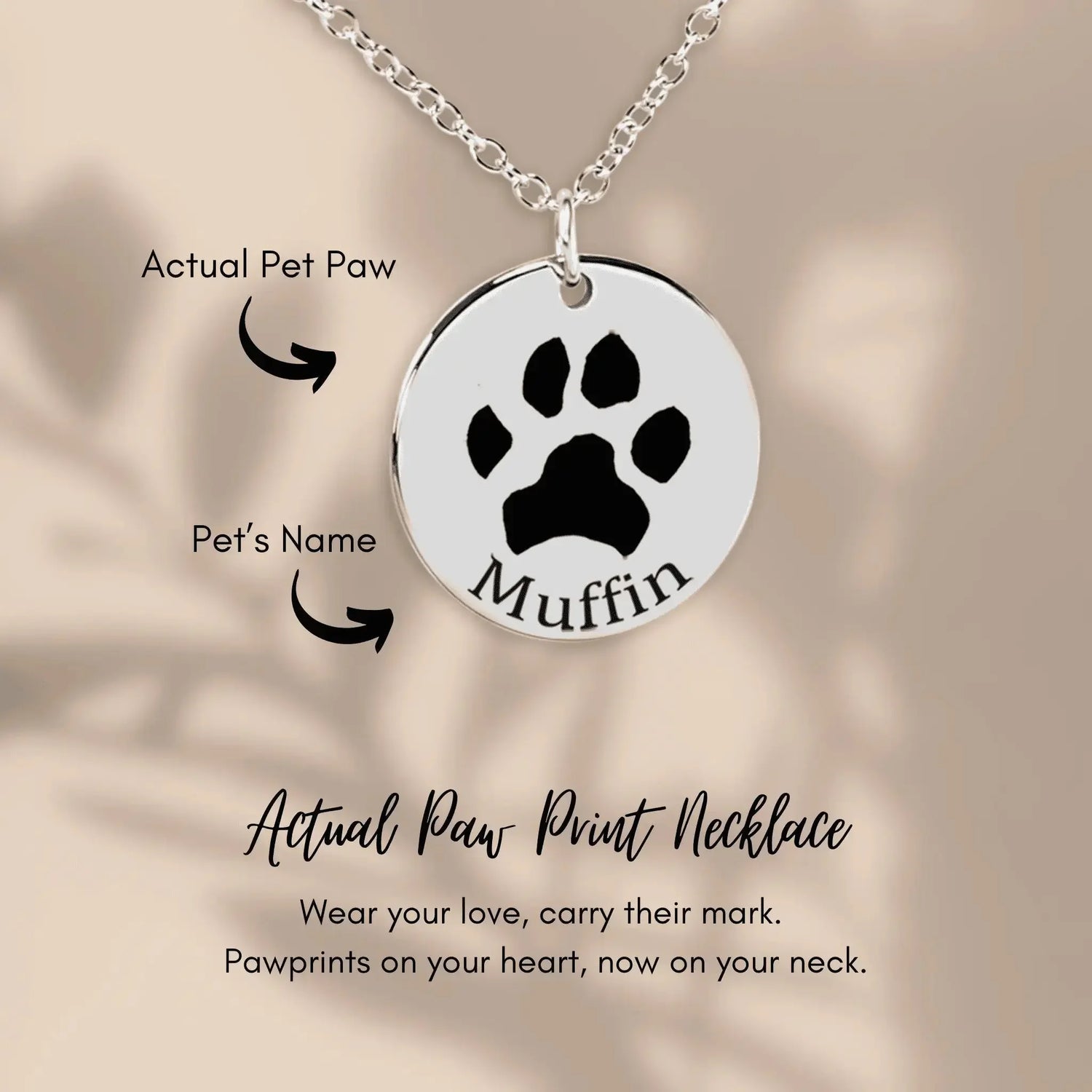Cat Urine Odor Removal: A Paw-some Guide from Floofie 😻
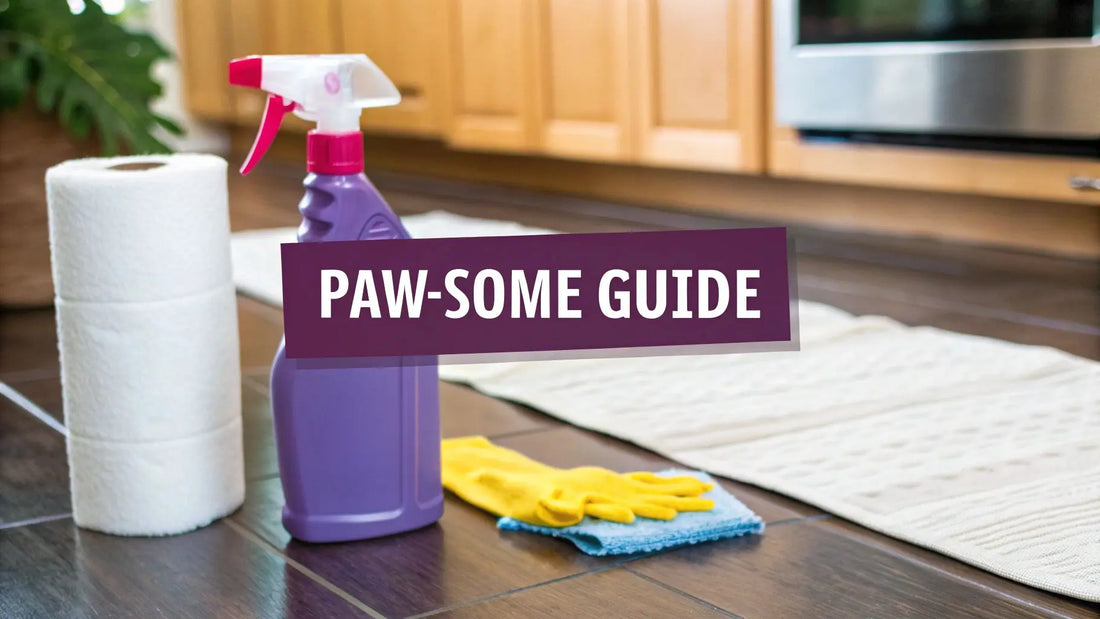
Dealing with cat urine odor removal takes more than just a bit of elbow grease and soapy water, human! If you want to get rid of that eau de feline for good, you need to get a little scientific to break down the super-stubborn uric acid crystals. Your secret weapon, as our mascot Floofie would tell you, is a purr-fectly formulated enzymatic cleaner, a special formula designed to completely destroy the odor-causing stuff at a molecular level. 🐾
Understanding Why Cat Urine Odor Lingers
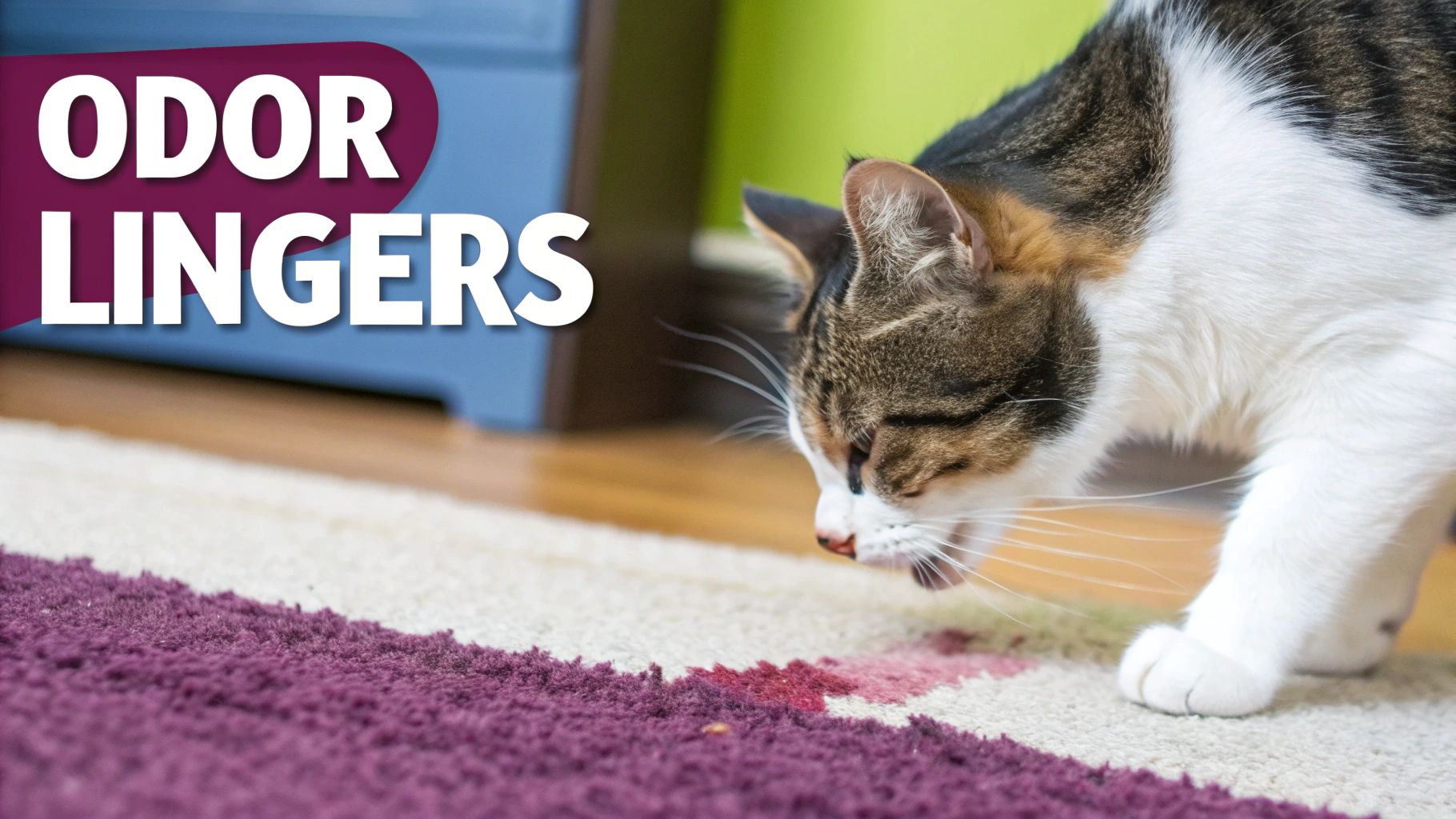
Ever feel like that cat pee smell just won't die? You scrub and spray, thinking you’ve finally won the battle, only for that unmistakable funk to come creeping back on a humid day. Floofie is here to tell you—you're not crazy! This isn't just a simple mess; it's a tiny, smelly science experiment happening right in your carpet.
The real villain in this story is uric acid. While your average household cleaner might wash away some of the mess, it leaves the uric acid crystals behind. These crystals are the true culprits behind that smell that seems to have nine lives.
They aren't water-soluble, which means they stubbornly latch onto fibers in your carpet, furniture, and can even seep into porous surfaces like wood and grout. The moment a little humidity hits the air, those crystals reactivate and release that pungent, ammonia-like odor all over again. It's a "scent-sitive" situation, to say the least! 🙀
The Science Of The Smell
So, what makes these little crystals so potent? It all boils down to the chemical cocktail that is cat urine. While there are a few components, the ones that cause the most trouble are:
- Urea: This is the sticky, primary part of the mess.
- Urochrome: The pigment that gives urine its lovely yellow hue.
- Uric Acid: The nearly insoluble crystals that bond tightly to whatever surface they land on.
This is exactly why trying to mask the smell with air fresheners or using standard cleaners is a battle you’ll never win. You're just slapping a fragrant band-aid on a problem that needs a real cure.
DIY Remedies vs Pro-Grade Cleaners
When you're faced with a fresh puddle, it's tempting to reach for whatever's under the sink. But not all cleaners are created equal, especially when you're up against the power of uric acid. Here’s a quick look at why pro-grade enzymatic cleaners are the undisputed champions.
| Cleaning Method | How It Works | Effectiveness on Cat Urine | Floofie's Rating 🐾 |
|---|---|---|---|
| Vinegar & Baking Soda | Neutralizes the alkaline salts in fresh urine. | Temporarily reduces odor but doesn't break down uric acid crystals. The smell will likely return. | 🐾🐾 |
| Soap & Water | Dilutes and washes away water-soluble components. | Cleans the surface-level mess but leaves uric acid completely untouched. | 🐾 |
| Bleach or Ammonia | Disinfects and can break down some compounds. | Extremely dangerous! Ammonia smells like urine to a cat, encouraging them to pee there again. Never mix with other cleaners. | 🐾 (Avoid!) |
| Enzymatic Cleaner | Uses beneficial bacteria and enzymes to "eat" and digest uric acid, breaking it into odorless compounds. | The only method that completely eliminates the source of the odor for good. | 🐾🐾🐾🐾🐾 |
The verdict is clear: for true cat urine odor removal, you need a cleaner that can dismantle those uric acid crystals. This is where a product like FloofChonk's Pro-Grade Enzymatic Cleaner comes to the rescue! These specialized formulas contain enzymes that literally consume the uric acid, breaking it down into simple, harmless, and—most importantly—odorless components.
Floofie's Tip: Remember, your cat's sense of smell is about 40 times stronger than yours! If you can still detect even a faint odor, you can bet your cat can, which might just encourage them to mark that same spot all over again. Total elimination with a product like our FloofChonk Pawsitively Gone Stain & Odor Eliminator is the only way to break the cycle.
And you're not alone in this fight! The global market for pet stain and odor control products was valued at around USD 9.8 billion in 2025 and is projected to hit nearly USD 15 billion by 2035. That's a lot of pet parents looking for the right tools to keep their homes fresh and clean! You can read the full research about the growing pet odor control market if you're curious.
Of course, it's also important to understand why your cat might be peeing outside the box in the first place. It’s rarely out of spite! It could be a sign of stress, a medical issue, or just a weird behavioral quirk, like the strange reasons behind cat zoomies after pooping. Getting to the root of both the smell and the behavior is your first step toward a happier, fresher home for you and your furry overlord.
Assembling Your Odor-Fighting Arsenal
Ready to declare war on that sneaky cat pee smell? It's time to build your very own 'Pee-mergency Kit.' With the right gear, you'll be prepared for any "oops" moment your furry overlord throws your way. 💪
Your new best friend in this fight is a high-quality enzymatic cleaner. Forget regular soap and water; you need the big guns! These aren't just cleaners; they are bioactive solutions packed with special proteins (enzymes) that literally consume the odor-causing uric acid crystals. They don't just mask the smell—they obliterate it on a molecular level.
Floofie’s Fur-midable Fact: Did you know cats have about 200 million scent receptors in their noses? That's why even a tiny bit of leftover odor can signal a "purr-fectly acceptable" place to pee again. An enzymatic cleaner like our FloofChonk Pawsitively Gone Stain & Odor Eliminator ensures the spot is truly clean, even to your cat's super-sensitive sniffer!
The Must-Have Tools
Before you can tackle the mess, you need to gather your supplies. Having these items on hand means you can act fast, which is critical for preventing stains and smells from setting in. Here's what should be in your kit:
- A Top-Tier Enzymatic Cleaner: This is non-negotiable. We recommend our FloofChonk Pawsitively Gone Stain & Odor Eliminator, which is specially formulated to destroy uric acid.
- A UV Blacklight: This is your secret weapon for finding old, dried, invisible stains. Under the blacklight, urine stains glow, revealing every single spot you need to treat. It's like being a detective for cat pee! 🕵️♀️
- Paper Towels or Absorbent Cloths: You'll need these to blot up as much fresh urine as possible before applying any cleaners.
- Protective Gloves: Always a good idea to keep your paws clean while dealing with the mess.
This simple process shows how your new tools work together to defeat even the toughest odors.

As you can see, finding the source with a UV light is the crucial first step. It makes sure your enzyme treatment from FloofChonk Pawsitively Gone Stain & Odor Eliminator can get to work right where it's needed most.
Why This Arsenal Works
There's a reason why the pet odor control market is a multi-billion dollar business—having the right products simply works. In the U.S. alone, the market was valued at USD 6.47 billion in 2023, and it's still growing. This just goes to show how many pet parents rely on specialized formulas for an effective cleanup. You can find more details in the U.S. pet odor control market report.
When you combine a powerful cleaner with a reliable detection method, you create a system that leaves no trace of the accident behind. If you're looking for more recommendations, check out what the experts say about the best carpet cleaners specifically designed for cat urine.
Once you've completely eliminated the odor, you can focus on making your home smell delightful again. Our guide on choosing the right pet-friendly incense can help create a calming and fresh atmosphere for both you and your feline friend.
How to Clean Cat Urine from Any Surface
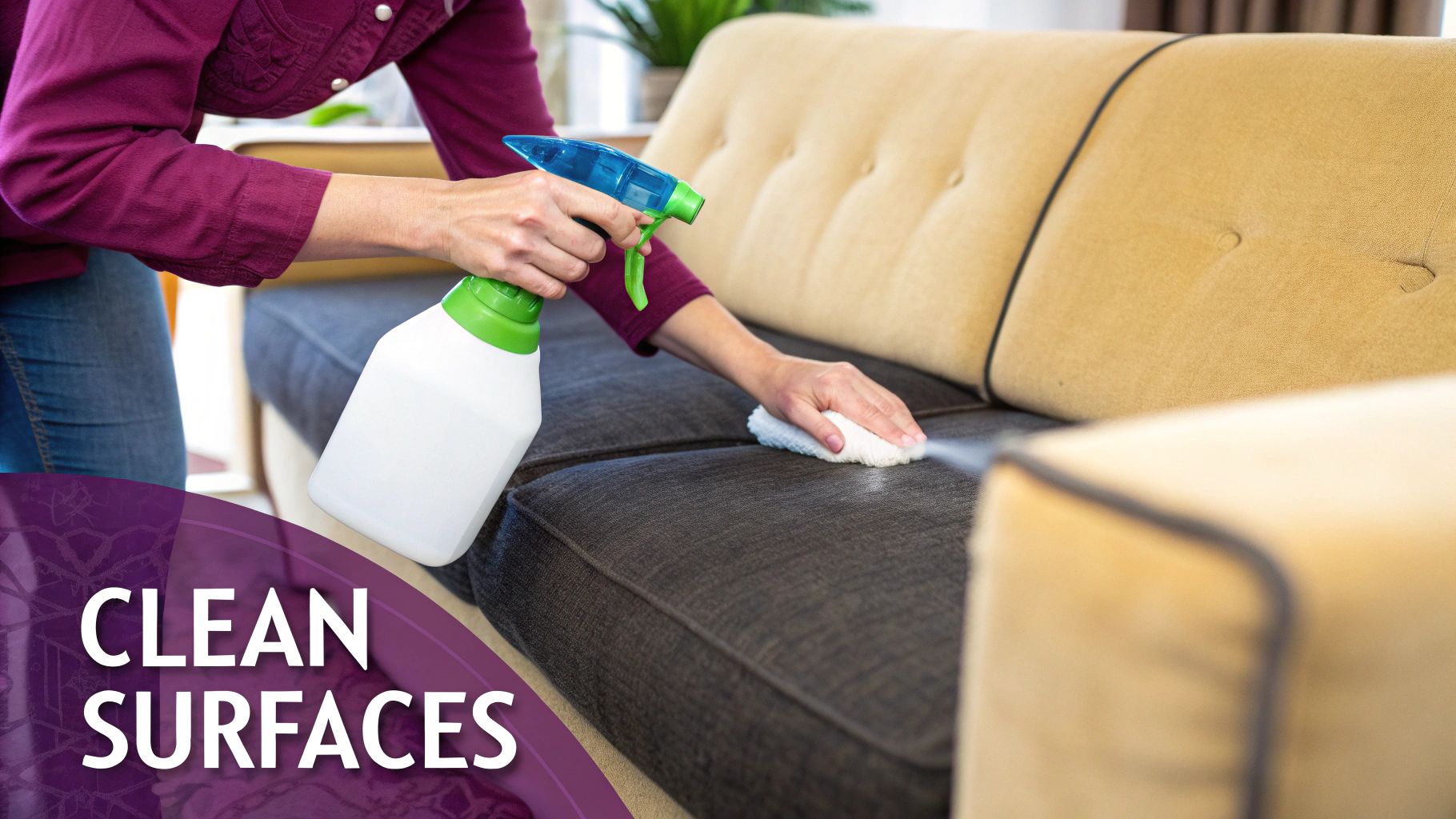
That sinking feeling when you discover an "oops" spot doesn't have to ruin your day. When your furry roommate misses the litter box, the secret to total cat urine odor removal is a one-two punch: act fast and use the right method for the surface. Don't worry, Floofie is here to walk you through the purr-fect playbook for tackling carpets, couches, hardwood floors, and more! 🧼
Every surface has its own quirks. Porous wood can trap smells deep down, while delicate fabrics need a gentle touch. But with the right odor-fighting tools on hand, you can handle any mess your cat throws your way.
The Carpet Cat-astrophe Cleanup
Carpets are basically giant sponges for cat pee, which makes them one of the toughest cleaning challenges. Urine doesn't just sit on top; it soaks deep into the fibers, often reaching the padding and even the subfloor below. A quick surface spray just isn't going to cut it here.
First things first: blot, don't rub! Grab a thick stack of paper towels and press down firmly on the wet spot to soak up as much as you can. Keep swapping out for fresh towels until no more moisture comes up. Rubbing only grinds the urine crystals deeper into the carpet fibers, making your job ten times harder.
Now, it's enzyme time. Be generous! You need to completely saturate the area with a good enzymatic cleaner, like our FloofChonk Pawsitively Gone Stain & Odor Eliminator. The goal is to use enough cleaner to soak as deep as the urine did. Let it sit for the time recommended on the bottle—this gives the enzymes a chance to get to work breaking down the smelly uric acid.
Floofie’s Golden Rule: Patience is everything! Enzymes need time to feast on the molecules that cause the odor. Rushing the process or not using enough of your FloofChonk Pawsitively Gone Stain & Odor Eliminator is the #1 reason that nasty smell comes back. Let it do its job.
For some extra backup on those really tough rug smells, check out these proven methods for removing urine odors from carpet. Their tips are a real lifesaver for stubborn spots.
Tackling Upholstery And Fabrics
Oh, the dreaded sofa cushion stain! Cleaning upholstery is a delicate dance. You have to be tough on the odor but gentle on the fabric. Your absolute first step, always, is to do a spot test with your cleaner on a hidden area of the furniture.
Just like with carpets, start by blotting up as much urine as you can with a paper towel. Then, lightly mist the area with your enzymatic cleaner. Be careful not to completely soak delicate fabrics. After letting it sit, blot the spot again with a clean, damp cloth to "rinse" it, then finish by blotting with a dry cloth. You might need to repeat this a couple of times for older or stronger stains.
Hardwood And Hard Surfaces
You'd think hard surfaces would be a piece of cake, but they have their own traps. Urine can easily seep into the tiny cracks between floorboards or into porous materials like unsealed concrete and grout, creating a lingering smell you can't seem to find.
Wipe up the puddle immediately. Use an enzyme cleaner that’s specifically marked as safe for your type of flooring. For hardwood, it’s critical to use a product that won't strip or damage the finish. Our versatile FloofChonk Pawsitively Gone Stain & Odor Eliminator is a great choice because it's formulated to be safe on multiple surfaces. After treating the spot, wipe the area clean and let it air dry completely.
To make things even easier, here’s a quick-reference guide for your next cleaning mission.
Surface-Specific Cleaning Cheat Sheet
This little table is your go-to guide for handling cat urine accidents on different materials around your home.
| Surface Type | Key Challenge | Must-Do First Step | Recommended Product |
|---|---|---|---|
| Carpet | Deep saturation into padding | Blot with heavy pressure to absorb | FloofChonk Pawsitively Gone Stain & Odor Eliminator |
| Upholstery | Fabric damage & discoloration | Spot test in a hidden area | FloofChonk Pawsitively Gone Stain & Odor Eliminator |
| Sealed Hardwood | Seeping between floorboards | Wipe immediately, don't let it sit | FloofChonk Pawsitively Gone Stain & Odor Eliminator |
| Mattress | Odor absorption into foam | Blot and saturate deeply | FloofChonk Pawsitively Gone Stain & Odor Eliminator |
No matter what surface you're dealing with, the basic principles are the same: blot the excess liquid, saturate the area with enzymes, give them time to work, and then let it air dry. With this game plan, you can defeat any pee-mergency that comes your way! 😼
Preventing Future Accidents to Keep Your Home Fresh
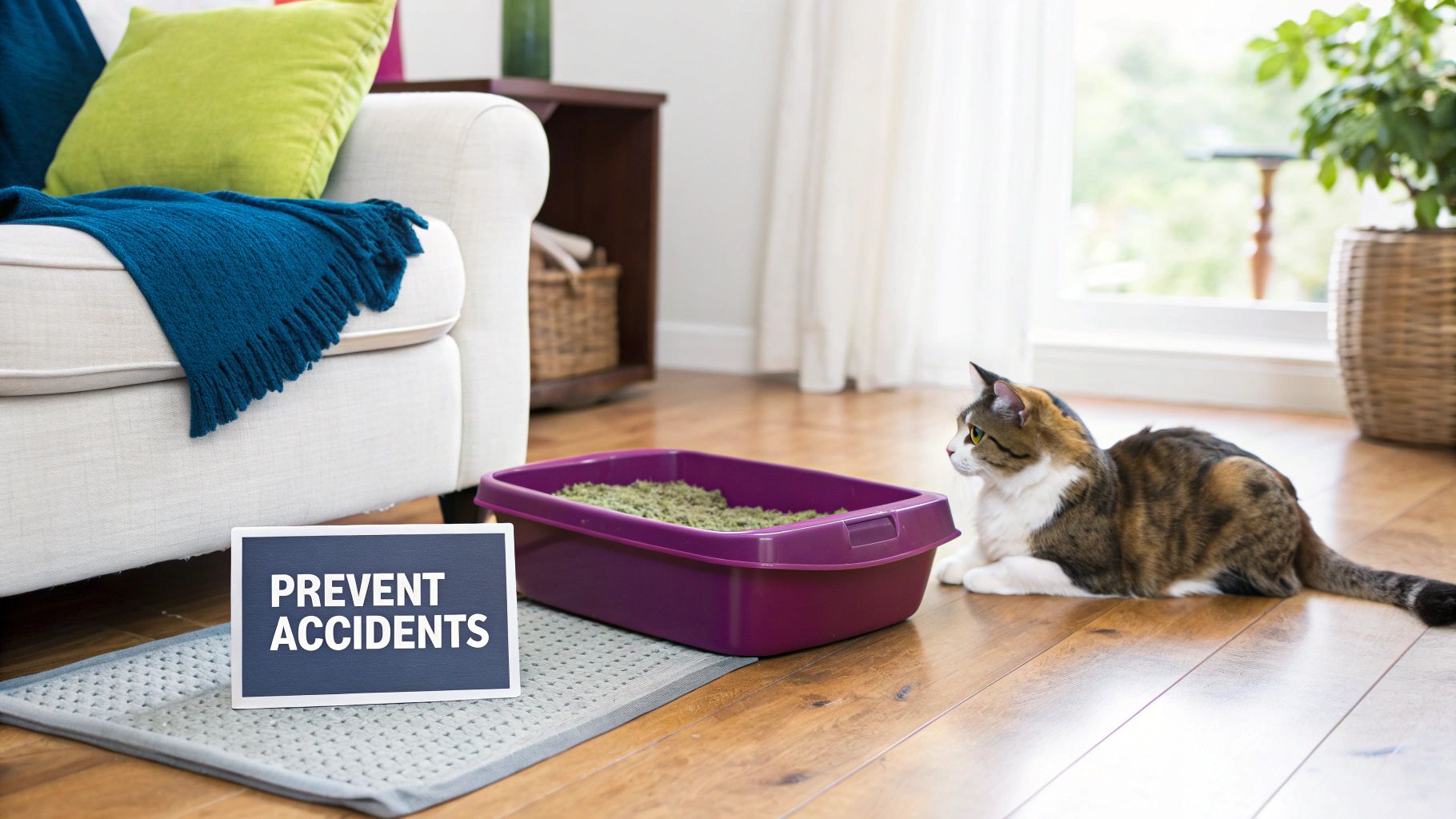
While mastering cat urine odor removal is a superpower for any pet parent, the ultimate goal is to prevent those little accidents from happening in the first place. Think of it as playing defense! A happy cat is usually a well-behaved cat, so understanding their world is the real key to a fresh-smelling home. ❤️
Preventing future mishaps starts with putting on your detective hat and figuring out the "why" behind the pee. It's almost never about spite; your kitty is trying to tell you something!
Getting to the Root of the Puddle
When a cat starts avoiding their litter box, it's often a cry for help. Your first and most important step should always be a trip to the vet. Many medical issues, like painful urinary tract infections (UTIs), kidney disease, or even arthritis that makes climbing into the box a chore, can cause them to pee elsewhere.
Once medical causes are ruled out, it's time to look at their environment. Cats are sensitive creatures, and stress is a major trigger. A new pet, a change in your routine, or even just moving furniture around can make your feline friend feel anxious and insecure.
The Golden Rules of the Litter Box
A subpar litter box setup is one of the most common reasons for accidents. Honestly, a little effort here goes a long way in ensuring your cat uses their designated toilet.
Here are Floofie's non-negotiable rules for a purr-fectly pleasant potty experience:
- The "Plus One" Rule: The gold standard is one litter box per cat, plus one extra. So, if you have two cats, you should have three boxes. This prevents territorial spats and ensures there's always a clean option available.
- Location, Location, Location: Place boxes in quiet, low-traffic areas where your cat feels safe. Nobody wants to do their business in the middle of a busy hallway or next to a rattling washing machine.
- Keep It Squeaky Clean: Scoop the box at least once a day. At least! And completely change out the litter and wash the box weekly. Cats are meticulously clean, and they won't use a dirty bathroom. Would you?
Creating the ideal litter box setup is a huge part of building good habits. For new kittens, you might want to check out our complete guide on how to litter train a kitten for even more tips and tricks.
Remember, a pristine litter box is a powerful deterrent against accidents. It's a simple change that can make a world of difference.
Of course, the right products are essential for maintaining that cleanliness. The pet odor control market was valued at over USD 14.16 billion in 2024, with litter products making up the largest share. That's a lot of litter!
This just shows how crucial a great setup is for odor management. A quality litter, paired with a fast-acting spray cleaner like our FloofChonk Pawsitively Gone Stain & Odor Eliminator for quick clean-ups, creates an unbeatable combination. You can discover more insights about the global pet odor control market and its growth.
By understanding your cat's needs and creating a calm, clean environment, you can stop odors before they even start! 😻
Troubleshooting Stubborn and Lingering Odors
Are you being haunted by a phantom cat pee smell? You clean and clean, but that faint, funky odor just refuses to leave. Don't throw in the towel just yet! Floofie is here to cheer you on because this is where we tackle the boss-level challenges of cat urine odor removal. 🏆
Sometimes, the problem runs much deeper than the carpet fibers. If urine has been left to sit for a while, it can soak straight through the carpet and padding, seeping right into the subfloor. When that happens, just treating the surface is like putting a band-aid on a leaky pipe—it’s simply not going to be enough.
This is the moment your UV blacklight becomes your most valuable player. In a completely dark room, do a slow, methodical scan of the area to pinpoint exactly where the urine has soaked through. Once you've found the source, you’ll probably need a more aggressive approach. That usually means reaching for a heavy-duty enzymatic cleaner like our FloofChonk Pawsitively Gone Stain & Odor Eliminator.
When DIY Isn't Cutting It
So, what happens if you've tried everything and the ghost of pee-past still lingers? This scenario is common with old, set-in stains, especially if they were previously "cleaned" with the wrong stuff, like products containing ammonia or bleach. Big mistake. These chemicals can actually lock in the uric acid crystals, making it even harder for enzymes to break them down later.
In these really stubborn cases, it might be time to call in the cavalry. Professional cleaners have access to industrial-strength equipment and solutions that can often succeed where our home remedies have failed.
Floofie’s Pro Tip: When you hire a professional, be incredibly specific! Ask them if they use enzymatic treatments for pet urine. Standard steam cleaning uses intense heat, which can permanently set the stain and odor into carpet fibers, making the problem even worse.
Questions to Ask a Professional Cleaner
Not all cleaning services are created equal, especially when it comes to pet odors. To make sure you're hiring the right team for the job, you absolutely need to ask these critical questions:
- Do you use a specialized enzymatic cleaner designed specifically for pet urine?
- Can you treat the carpet padding and even the subfloor if necessary?
- Do you offer any kind of guarantee on odor removal?
Hiring a pro can feel like a big step, but for deeply saturated or ancient stains, it's often the most effective—and permanent—solution. Persistence is key. With the right strategy and maybe a little professional backup, you can defeat even the most stubborn cat pee odor for good. You got this! 😼
Your Top Cat Urine Odor Questions, Answered
Still wrestling with a few questions about getting rid of that cat pee smell for good? No problem. We've heard it all from fellow cat parents, and we've rounded up the most common head-scratchers to help you finally win this battle.
Let’s clear the air, shall we? 😼
Does the Vinegar Trick Actually Work?
So many people ask about this classic DIY solution. Here's the deal: a vinegar and water mix can temporarily mask the ammonia smell from a fresh accident. It helps neutralize the immediate funk, which is great in a pinch.
But—and this is a big but—it does absolutely nothing to break down the uric acid crystals. These are the microscopic culprits that stick around and cause the smell to return again and again, especially when it's humid.
For a permanent fix, you need something that truly eliminates the source of the smell. That's why an enzymatic cleaner like our FloofChonk Pawsitively Gone Stain & Odor Eliminator is the only tool we trust to get the job done right the first time.
Are Enzymatic Cleaners Safe For My Pets?
This is a fantastic and super important question! The short answer is yes, a high-quality enzymatic cleaner is perfectly safe to use around your furry family when you follow the product's directions.
Instead of harsh chemicals, these cleaners use beneficial bacteria and enzymes to literally digest the organic stuff causing the stain and odor. It's science, not scary chemicals.
To be extra safe, just follow these simple guidelines:
- Keep your pets out of the room while you're treating the area and it's still wet.
- Let the spot dry completely before letting them back on the furniture or carpet.
- Always grab a pet-specific formula. Our FloofChonk Pawsitively Gone Stain & Odor Eliminator was made from the ground up with your cat's safety and well-being in mind.
Why Does the Smell Keep Coming Back?
Ever notice the cat pee smell seems way stronger on rainy or humid days? You're not imagining it!
It all comes back to those stubborn uric acid crystals. When they're exposed to moisture in the air, they reactivate and release that pungent odor all over again. It's a frustrating cycle, and it's why you need a cleaner that destroys the crystals at a molecular level. It's the only way to truly win the war on cat pee smell for good. 🏆
Ready to arm yourself with the ultimate odor-fighting weapon? FloofChonk has everything you need to keep your home smelling fresh and clean. Grab our Pawsitively Gone Stain & Odor Eliminator and say goodbye to cat pee smells forever
